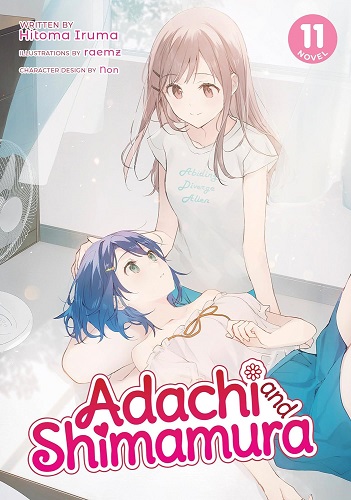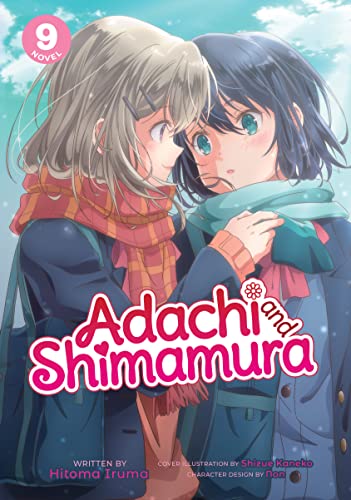By Hitoma Iruma and raemz. Released in Japan by Dengeki Bunko. Released in North America by Seven Seas. Translated by Molly Lee.
It may not feel like one, but the Adachi and Shimamura series comes out as a Dengeki Bunko title. One of the heavy hitters of the light novel world, skilled at many things, including, of course, cross-promotion with other series. And if you add to that Hitoma Iruma, who loves throwing in “if you get this, great, if you don’t, it doesn’t matter” references to their other series, you can sometimes get a crossover cameo pileup. And since we’re also dealing with a series that has not been (and probably is unlikely to be) licensed over here, I will let you know (and thanks to translator Molly Lee for confirming) that the kimono girl and the senpai who take up about half the narrative in this book are from the 3-volume light novel series “Watashi no Hatsukoi Aite ga Kiss Shiteta”, also a Dengeki Bunko title. Oh, and another Yashiro shows up. Not our Yashiro, and not the Ground Control to Psychoelectric Girl Yashiro, but the third one that we met earlier in this series. I need diagrams.
This is one of those volumes that really should be called Shimamura and Adachi – all the POV for the “main story” is hers this time around. It’s more a series of short stories than a novel (not the first time we’ve seen this), as we get to see Shimamura at 8 years old (hyperactive, full of life, hanging at the pool with her bestie Taru-chan), Shimamura at 15 years old (sullen, teenage drama, getting close to the Shimamura we meet at the start of the series), Shimamura at 18 years old (the present-day Shimamura, having a study date with Adachi that turns into a discussion about whether the attraction between the two of them is sexual or just romantic), and Shimamura at 22 years old (going on a vacation with Adachi, full of life and love, comfortable with herself and her girlfriend). There’s also brief chapters with Yashiro and Shimamura’s mother, Hino and Nagafuji, and Shimamura’s sister meeting another Yashiro.
Given that most of my experience with this series has been dragging Shimamura constantly in these reviews, it’s really amazing to see how far she’s come. The Shimamura at 18 and 22 is a Shimamura who has finally found the thing that she needed to shake her out of her torpor: being in love with Adachi. She’s still trying to figure out what this love is. Her discussion with Adachi about sex is, for this series, very frank (for any other series, not so much), and while it’s funny to see Adachi completely lose it multiple times over the course of a single minute, I also appreciated the conclusion they came to: Adachi wants to do sexual things but refuses to unless Shimamura does as well, and Shimamura has never thought about this at ALL, so is not ready. And that’s fine. Instead, we get the power of Adachi as a transformative force, transforming Shimamura into someone with real human emotions, joy, and energy. Go back to, say, the fifth book and read Shimamura, then re-read this one. Night and day.
12 is still the final volume, but before that Dengeki Bunko is releasing a short story volume (how is that different from most of the last few?), and “Vol. 99.9”, which is a collection of the bonus stories that came with the Blu-Ray release of the anime. That said, both of those will be a few more months till they get here, I imagine. Till then, enjoy Shimamura’s happiness, and Adachi’s Adachiness.



